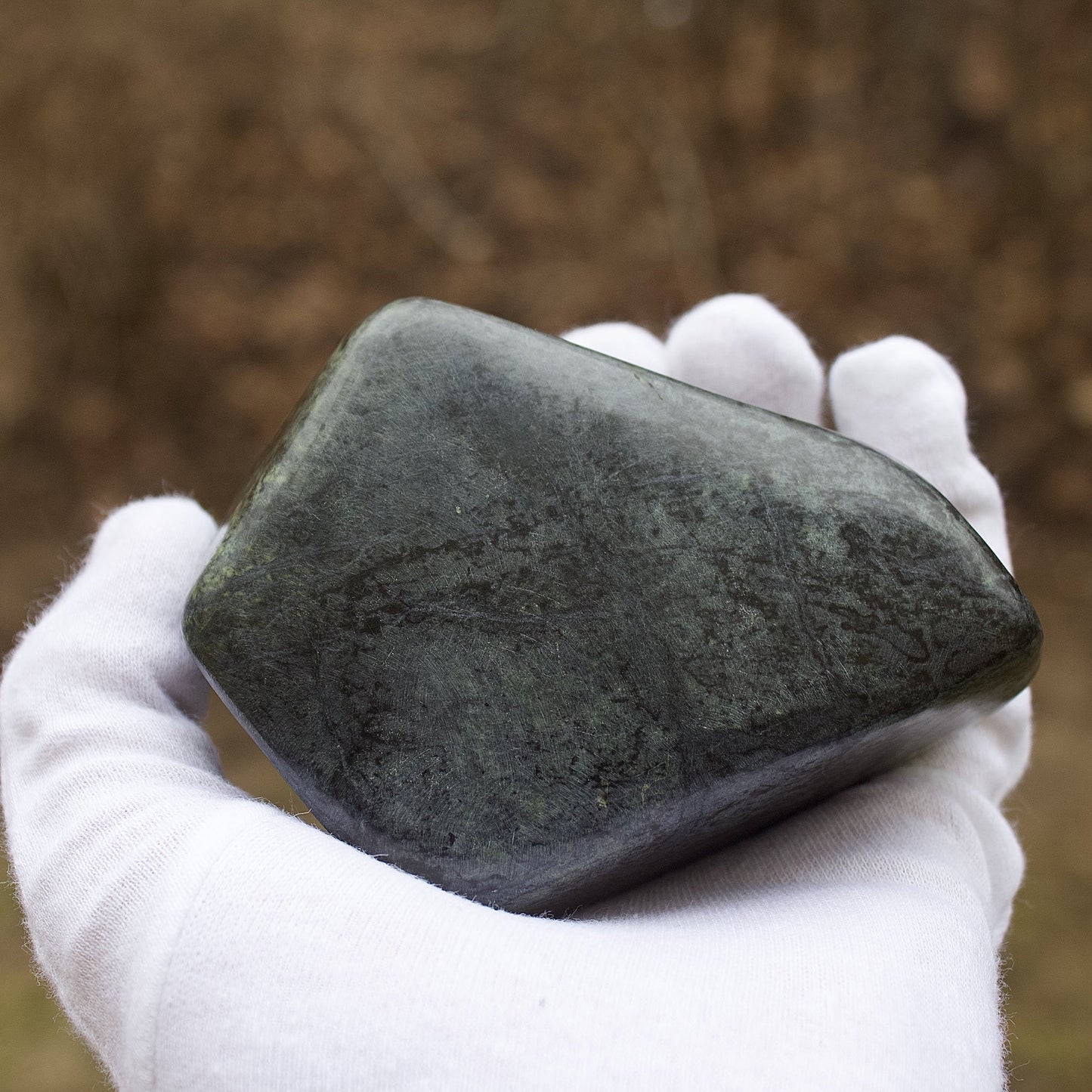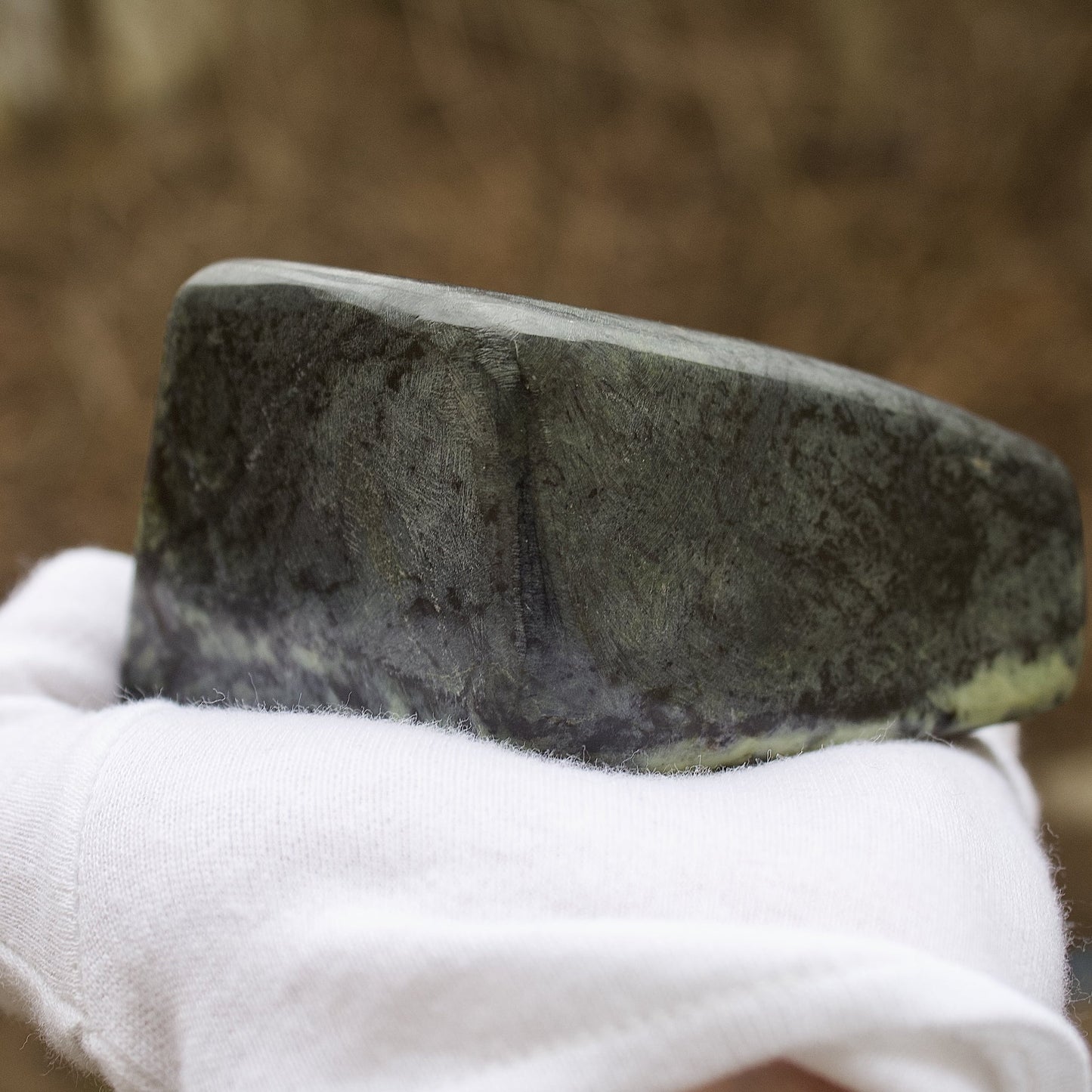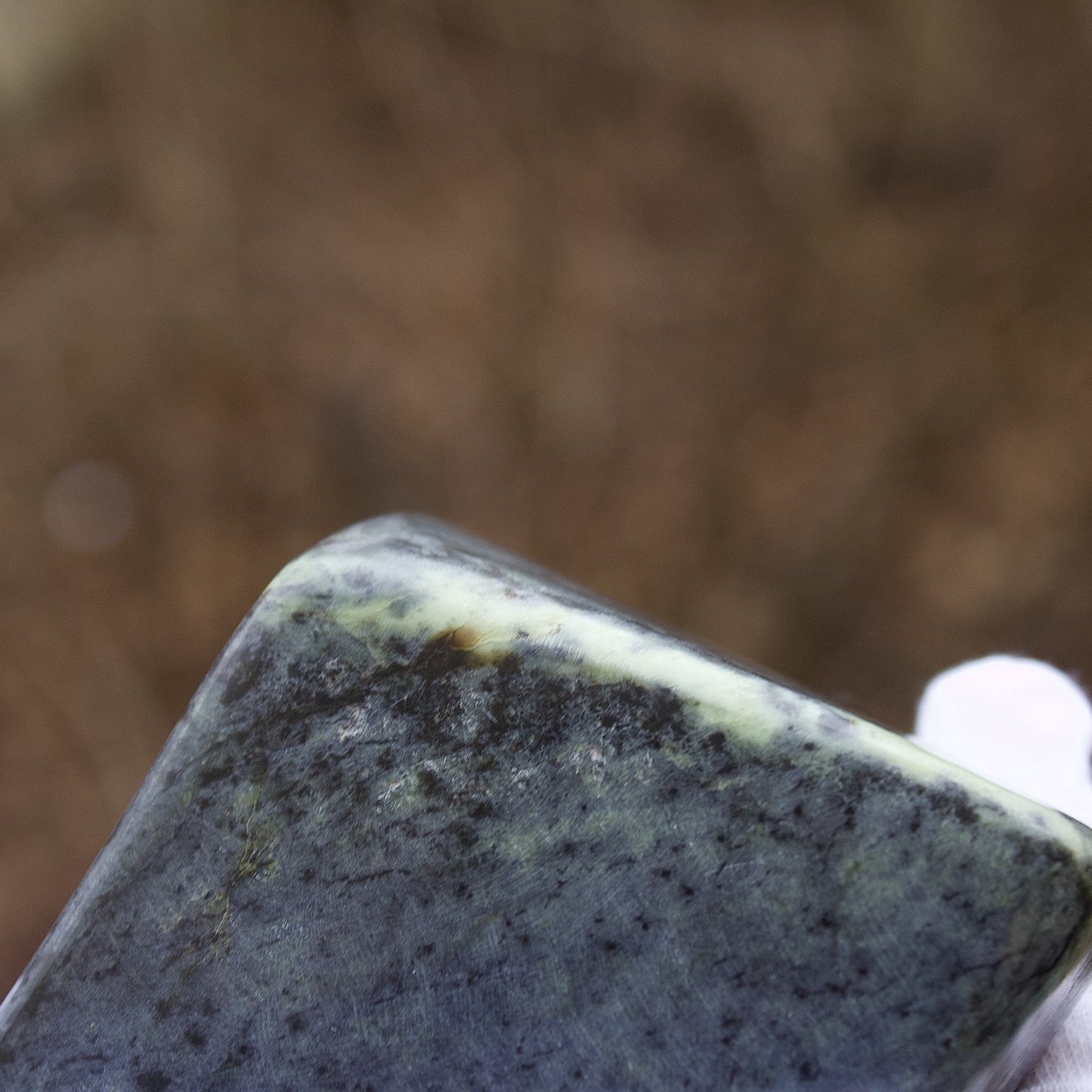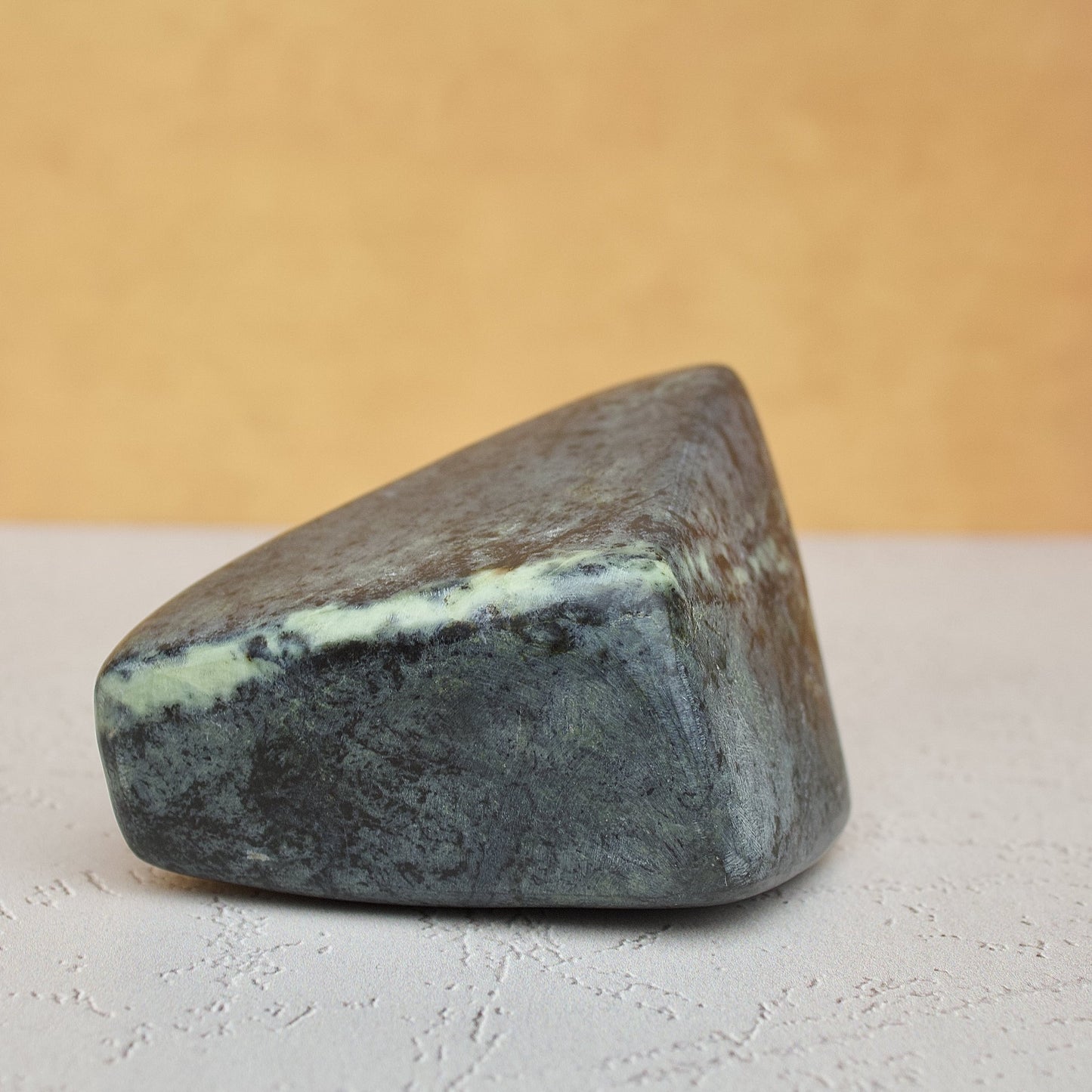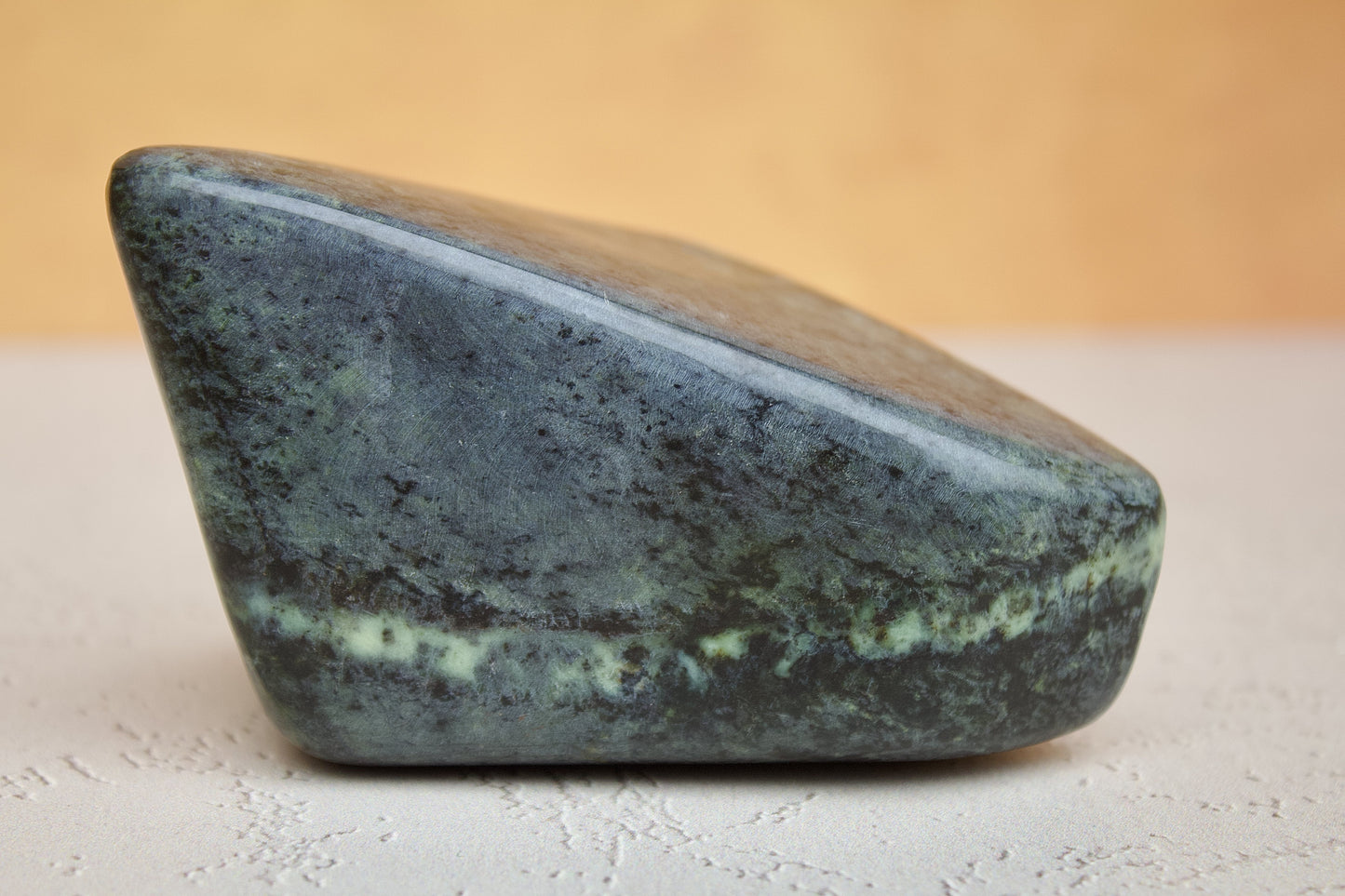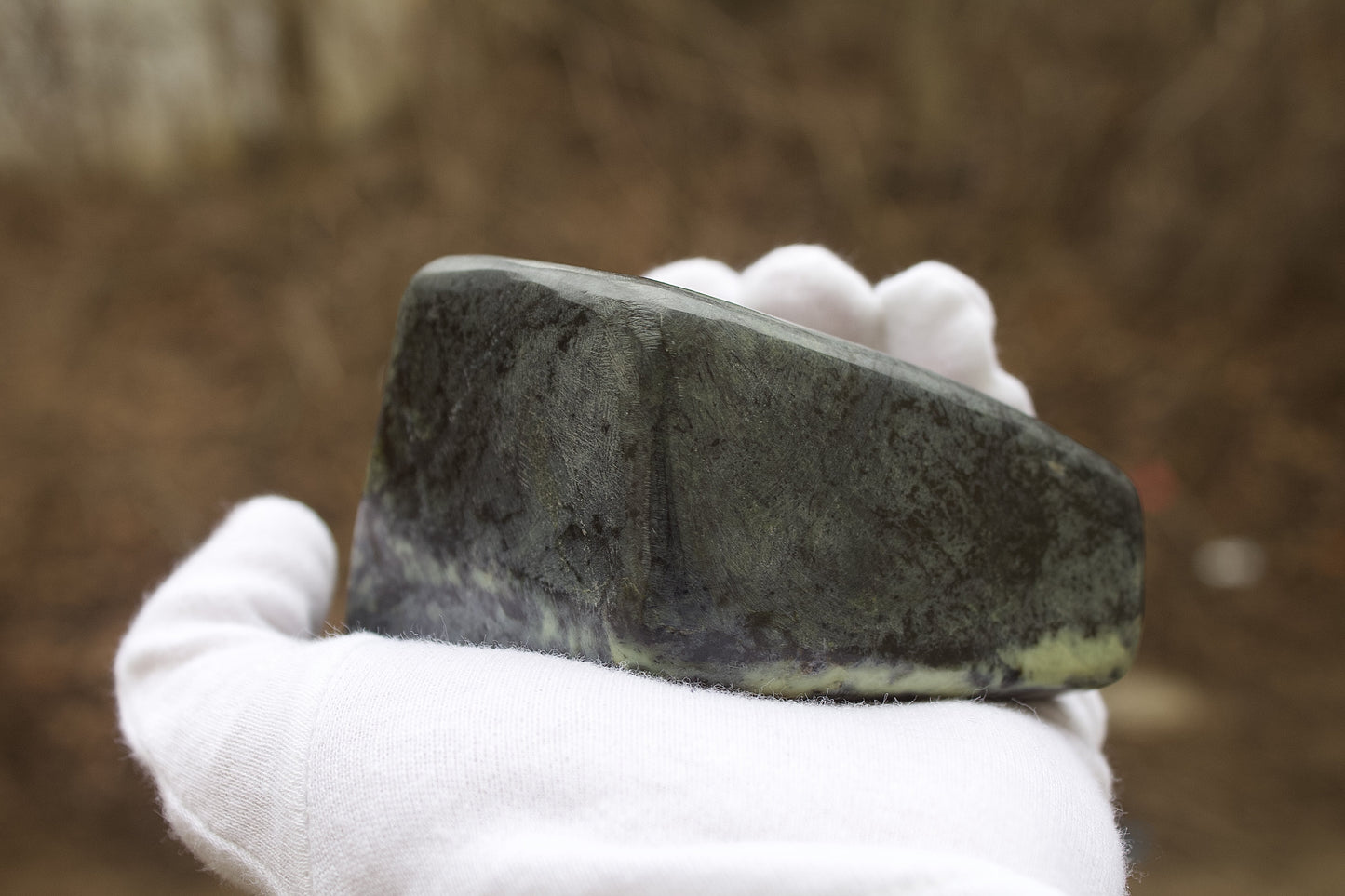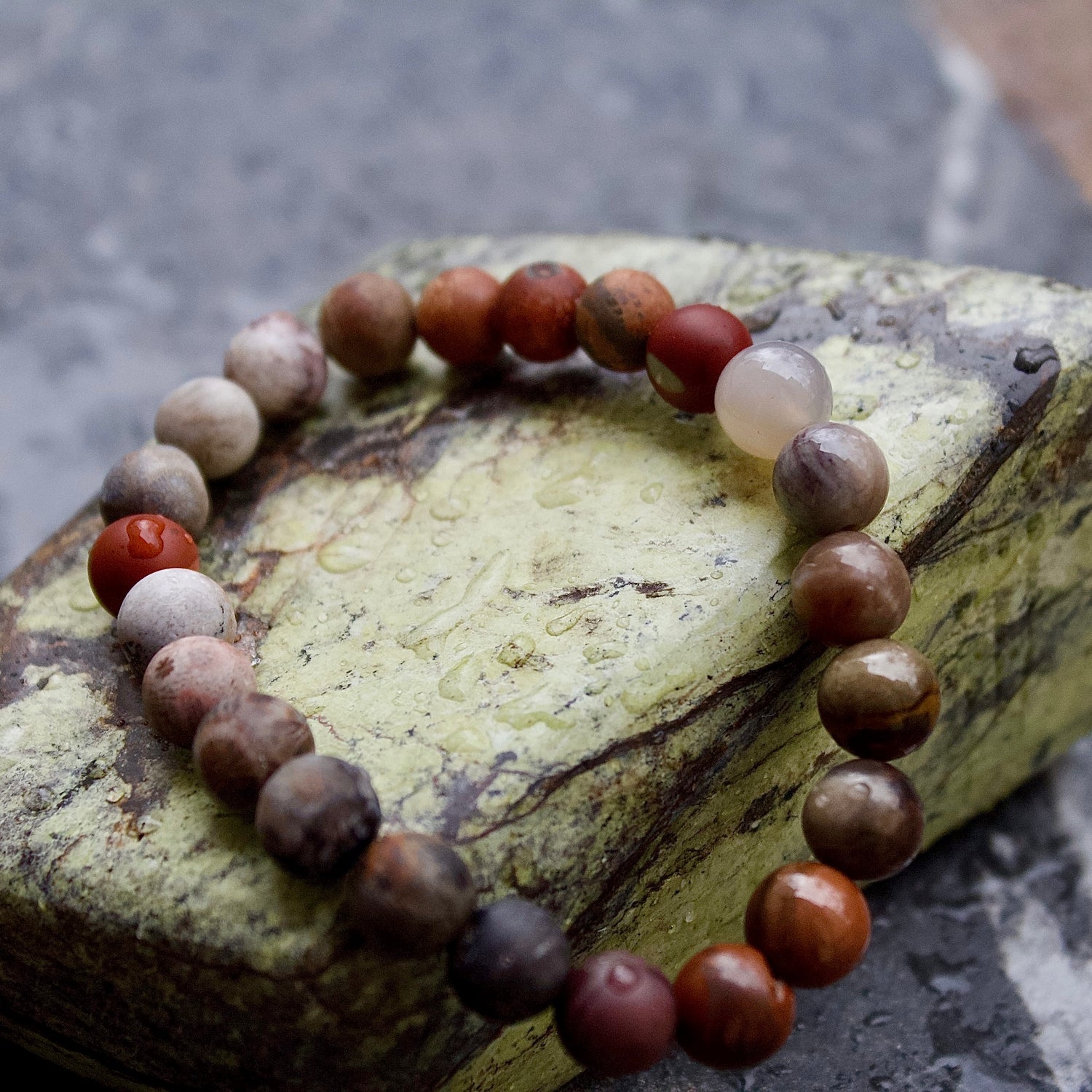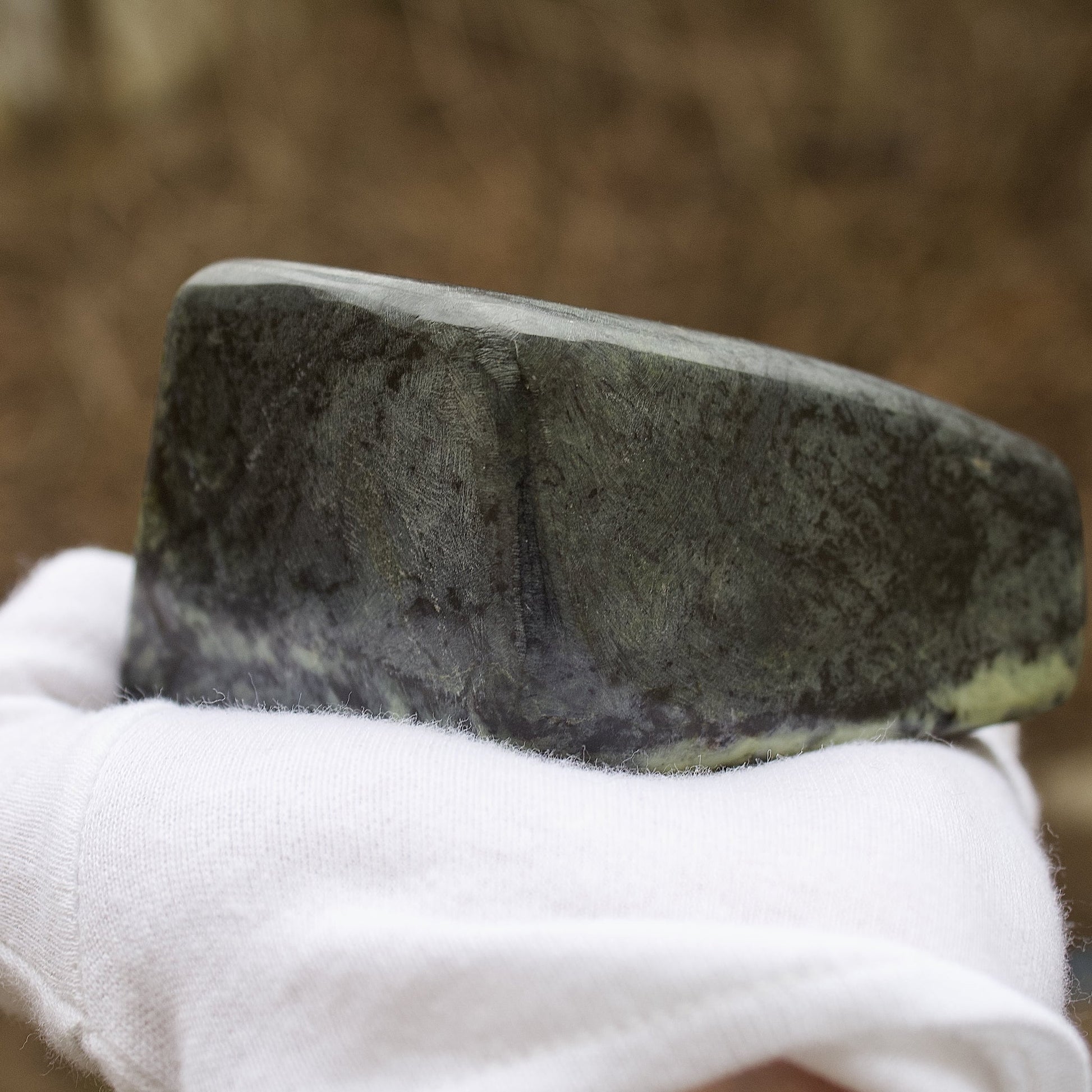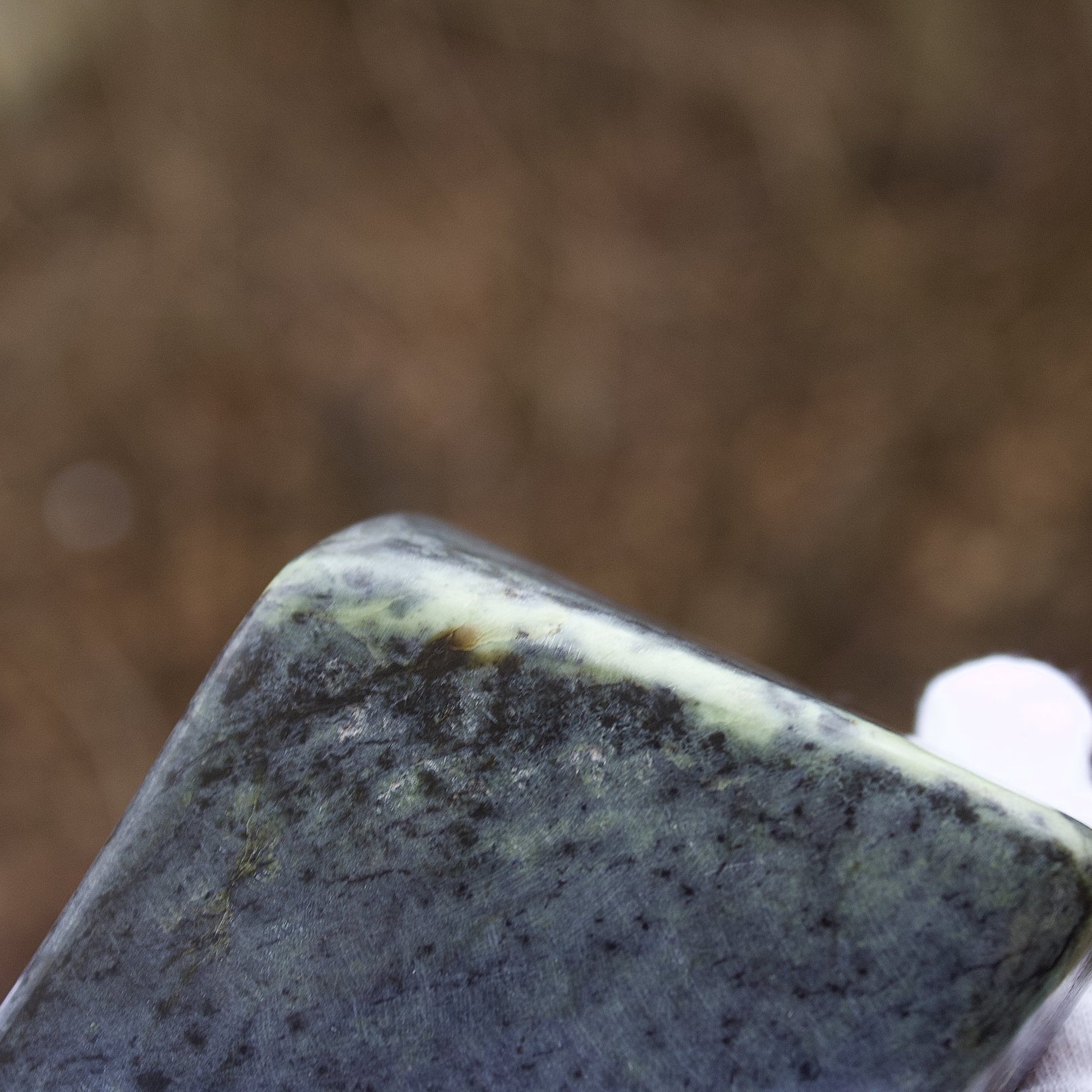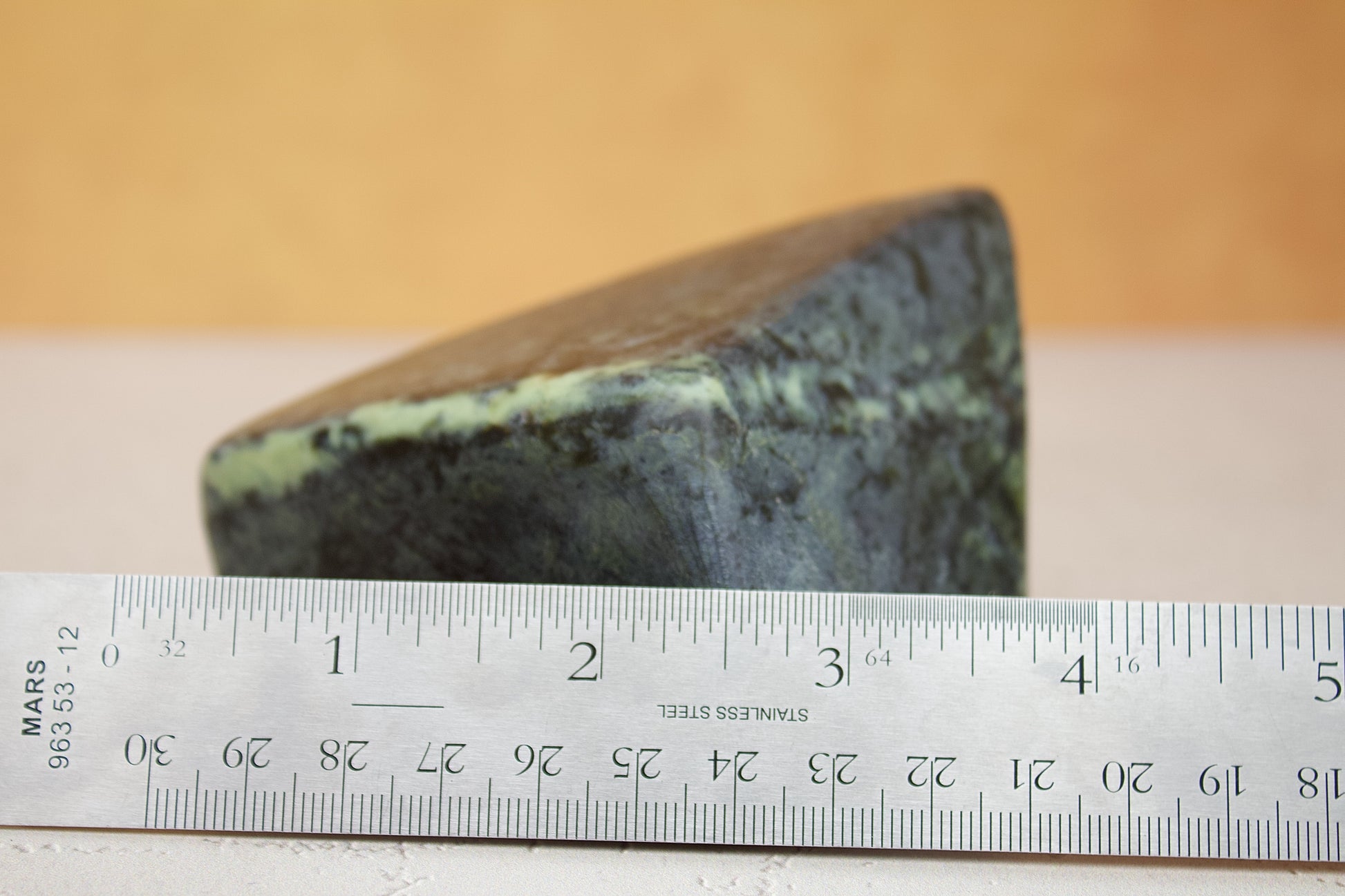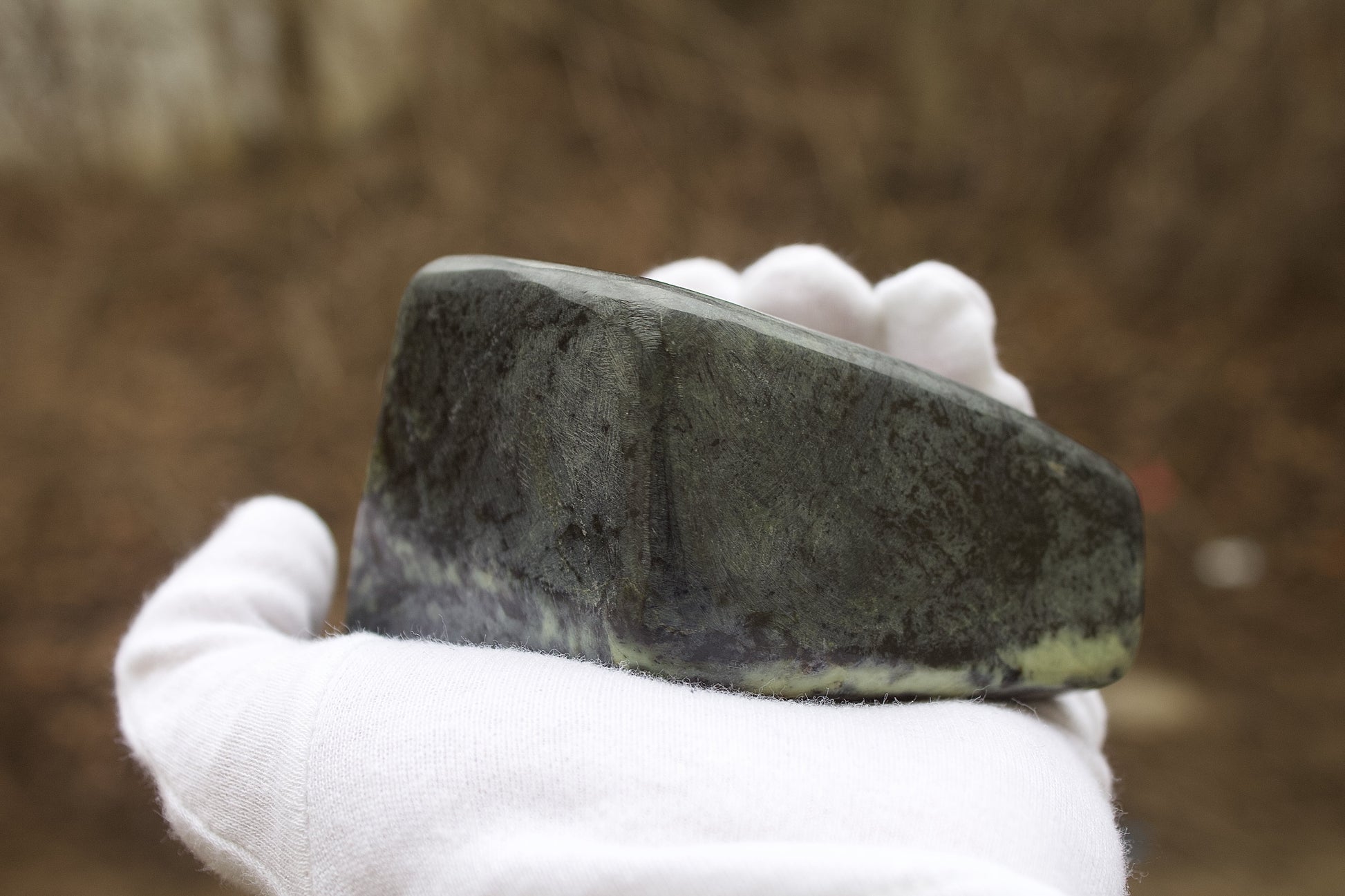Ancient Share, LLC
Dark Green Lizardite - Serpentine
Dark Green Lizardite - Serpentine
Couldn't load pickup availability
Serpentinite rocks are metamorphic rocks that have undergone a process called serpentinization, which replaces certain minerals like olivine and pyroxene with serpentine minerals, namely antigorite, chrysotile, and lizardite. They are often characterized by their striking visual similarity to reptilian skin, especially the lizardite variety.
This particular variety is found in a few small mines in Nyanga, Eastern Zimbabwe, though some more strongly yellow coloured ones may be from Shamva, north of Harare. These kinds of mines are really just local villagers digging by hand in small areas for income, without much, if any, machinery, and hence are not really environmentally taxing.
Due to their uniform structure and soft nature, they are often used in the local sculpture works. This style of polished lizardite serpentine stones are rather rare on the market.
Geology:
- Serpentine is the name for a group of minerals following a general formula, mainly including magnesium, silicon, and hydroxyl, with the "lizardite" variety being the most common. They form when ultramafic igneous rocks, such as olivine-containing peridotite, are subjected to retrograde hydrothermal metamorphism.
- Igneous rocks form when magma or lava cools and crystalizes/solidifies.
- Ultramafic rocks are igneous rocks with a very low silica content, and a very high magnesium and iron content.
- Olivine is a group of silicate minerals that are one of the first to crystalize from cooling magma. Peridotite is the name for coarse-grained and darkly coloured igneous rocks that have mainly olivine as their primary mineral.
- Hydrothermal metamorphism occurs when very hot and mineral rich waters interact with surrounding rocks at low pressures and cool temperatures. During this, the olivine, peridotite, and other minerals are replaced by serpentine minerals, like lizardite, through a process aptly called serpentinization.
- Retrograde metamorphism occurs when these metamorphic rocks cool down and release pressure from their initial (prograde) metamorphism (heating and increase of pressure to form).
- Serpentine minerals are comprised of magnesium, silicon, and hydroxyl. It has trace amounts of nickel and chromium. Iron oxide is primarily the cause of its green and yellow hues.
- These serpentine varieties are often found when ancient tectonic plates were thrust into oceans, which exposed these ultramafic rocks to water, thus causing the serpentinization.
Summary:
Hot ultramafic rocks are subjected to colder water environments, lose their heat and pressure, and have some of their minerals altered, and this process produces serpentinite stones, like this specimen.
Antigorite forms at higher temperatures and pressures and is usually paler in colour. Lizardite forms at lower temperatures and pressures and is more visually striking. Black spots are typically magnetite inclusions.
Rarity:
While lizardite-predominate serpentinite itself is not necessarily rare on earth, these polished forms we have are somewhat rare on the market. These Zimbabwean serpentine stones are indeed unique.
Note: This particular specimen is slanted, angular, and polished to reveal texture but remaining smooth to the touch.
Specifications:
2.38" tall x 4" wide x 2.49" thick
1.12lbs / 510 grams
Origin: Zimbabwe
Care information
Care information

